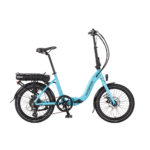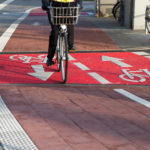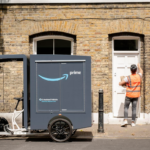I think I've got this straight now.
Controller side:-
1 Brown - 36v to the mode switch
2 White - 0v to the mode switch
3 Orange - To the Blue wire Mode switch ??
4 Blue - Mode set, Max Speed, Off. 0v to 1.8v depending on mode and dip switches
5 Red - +5v to the throttle and the brake switches
6 Yellow - Throttle signal. 0v to ~4.5v depending on throttle position
7 Black - 0v for the brake switches and the DIP switch resistor ladder
8 Green - Brake switch signal
Mode Switch
Red - +36v
Black - 0v
Blue - +5v?
Green - on/off, mode signal
Throttle
Black - 0v
White - signal
Red - +5v
Brakes
Brown 0v
Green signal, pulled to 0v when brakes activated, floating when brakes released. So the switches are normally open with the brakes released.
Red +5v Hall effect power?
Dip Switches
Mode switch signal out is ~3.6v in medium
Both Dip switches off, this is connected to ground via 2* 10k resistors with the mid point taken to the speed signal 4-Blue so 1.8v
The dip switches put one or two 20k resistors in parallel with the ground side 10k to reduce the ground side resistance to 6.6k or 5k. This reduces the max speed signal to the controller from 1.8v to 1.2v
The speed signal voltages don't quite match what I found. I'm not completely sure I'm reading the small 5 band resistors correctly. I think they're 10k-1%. Going to do a bit more checking today. I think the same mode switch is used for 24/36/48v So I expect a dip switch in there purely for the battery health display. I think the mode switch expects to always receive 5v and the mode signal back out is just something like 100%, 70%, 40% of this. With both dip switches off, this is cut in half before being fed to the controller max speed input.
Now the motor says 36v/350w (13)26. I take this to be 350w continuous Version 13, wound for a 26" wheel. The controller says 18A, Rated 9A. So I think that's peak 18A, continuous 9A. 9*36 = 324w, 9*41v= 369, so that more or less matches the motor's 350w. 18*36= 648w, 18*41v=738w I would have thought the motor is easily capable of handling this at peak and may well stand it continuous as well without overheating. I think this means the battery is expected to deliver 0.8c to 1.8c. Again, I would have thought the battery is easily capable of supplying this. I figure the controller is allowing up to 18A as a hard cutoff and has a motor rpm speed limit controlled by it's signal wire. The unknown is how high this rpm speed limit can be pushed, given the motor-controller pairing. eg what happens if you put 3.5v or 5v on the controller max speed signal wire? I can't imagine the controller will just run away as it should still have a hard sanity limit both on rpm and current draw.
What might happen though is that the controller has 3 states. Approximately, <1.0v = low mode, 1.0v to 2.0v = medium, 2.0v->5v = high and the rpm limit is then set in software inside the controller. This would match my understanding of the infineon based controllers.









